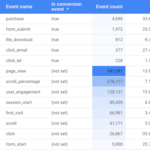When it comes to controlling the visibility of your website’s content in search engines, understanding the difference between Google’s noindex vs. disallow directives can be critical. In our experience, these two options are often confused as to when and how best to use them to make sure search engine’s are crawling your site as intended. This article explore’s the details of these two search engine tools, noindex and disallow, and how they impact your website’s visibility in results.
The noindex tag overview section will provide you with an understanding of how this directive works and its effect on search engine indexing. Following that, we’ll explore the robots Disallow directive, including how to implement it and why it can improve your crawl budget.
In our comparison of noindex vs disallow, we’ll highlight their similarities and differences to help you make more advanced decisions when optimizing your website for search engines. Additionally, we will discuss their impact on crawling (crawl budget) – an aspect to consider as medium to larger sites often see challenges with search crawlers spending the server time on their entire site. Aiming for your best online visibility with the right content relies on getting these directives correct.
Table Of Contents:
- Noindex Tag Overview
- Overview of Robots Disallow Directive
- FAQs in Relation to Google Noindex vs Disallow
- Final Review
Noindex Tag Overview
The noindex tag is an HTML meta tag that can be used to prevent a page from being indexed by search engines. This tag is placed in the <head> section of a web page and instructs search engine crawlers not to index the page. The primary purpose of using a noindex tag is to keep certain pages, such as private or duplicate content, out of search engine results.
To implement the noindex tag on your webpage, simply add the following code within the <head> section of the URL you want to block:
<meta name="robots" content="noindex">
This method allows you to have more control over which specific pages should be excluded from indexing. Although the noindex tag can prevent indexing, it does not stop crawlers from accessing these pages. This can be a consideration if you are experiencing issues with crawl budget. For complete exclusion of both crawling and indexing, consider combining this with a robots disallow directive.
Overview of Robots Disallow Directive
The robots disallow directive is an effective method to prevent search engines from indexing specific pages or subfolders on your website. This directive is placed in the robots.txt file, which should be located in the root directory of your site. By using this approach, you can instruct search engine crawlers not to crawl or index any pages listed within the robots.txt file.
- Create a robots.txt file: If you don’t already have one, create a text file named “robots.txt” and place it in your website’s root directory.
- Add disallow directives: To block specific pages or sections of your site, add lines like “Disallow: /example-page” or “Disallow: /private/*”. Each line represents a different URL path that you want to keep hidden from search engines.
- Test with Google Search Console: After implementing changes to your robots.txt file, use tools like Google’s Search Console to ensure that crawlers are respecting these directives correctly.
Both noindex tags and robots disallow directives serve similar purposes, they differ in terms of specificity and crawling behavior. It’s important for marketing professionals to understand these differences when crafting their digital strategy.
- The noindex directive is a tag that can be added to individual pages to prevent them from appearing in Google’s search results.
- The robots disallow directive blocks search engines from crawling specific pages altogether.
- Additionally, the noindex nofollow tag can be used to prevent search engines from following links on a page, while the robots disallow directive only affects crawling behavior.
Noindex vs Disallow Comparison
When it comes to preventing pages from being indexed by search engines, both the noindex tag and robots disallow directive have their advantages and disadvantages. The noindex tag is more specific and can be used on individual pages, while the robots disallow directive applies to all pages listed in the robots.txt file.
- Noindex Tag: Prevents a page from being indexed but does not stop crawlers from crawling it.
- Robots Disallow Directive: Prevents both crawling and indexing of any pages listed in its file.
To maximize your control over which webpages are included or excluded from search engine results, consider using these two directives together. This approach ensures that certain content remains hidden while still allowing crawlers access to other important information on your site.
Impact on Crawling
The noindex tag and robots disallow directive both impact how search engine crawlers crawl and index webpages. Since these are directives, most search engine crawlers will honor these directions. There may be cases where one or both of these may be ignored by search crawlers. These two directives should be used together for maximum effect when trying to keep certain pages out of search engine results.
- Using the noindex tag effectively
- Understanding robots.txt files and their purpose
- Technical SEO strategies for better website performance
For effective technical search engine optimization, it is best to understand the way these techniques can work together. By combining the power of both the noindex tag and robots disallow directive, you can achieve greater control over which pages appear in search engine results. Search engines, including Google, shouldn’t be able to display these pages in their results; this can be beneficial for marketing professionals desiring to keep certain webpages out of sight for specific marketing campaigns.
FAQs in Relation to Google Noindex vs Disallow
Does Google Respect Noindex?
Yes, Google respects the noindex directive. When a page has a noindex tag, it signals to search engines not to include that specific page in their index. This prevents the page from appearing in search results and ensures that users won’t find it through organic searches.
What Is the Difference Between Noindex and Disallow?
Noindex tells search engines not to index a specific page, while Disallow is used within the robots.txt file to block crawlers from accessing certain sections of your website. Noindexed pages can still be crawled but will not appear in search results; disallowed pages are neither indexed nor crawled by search engine bots.
Can Google Ignore Noindex?
Google typically honors the noindex directive; however, there have been instances where they may inadvertently crawl or index content due to technical issues or external factors like backlinks pointing towards those pages. It’s important for webmasters to monitor their site regularly and ensure proper implementation of directives. Using Google Search Console or crawlers that emulate search engines can surface URLs that are indexed and provide insights into how crawlers are discovering and indexing URLs.
Should I Use Noindex or Block in Robots.txt?
It depends on your goal: if you want a webpage excluded from indexing but still accessible for crawling (e.g., gathering data for sitelinks), use “noindex.” If you want both indexing and crawling blocked entirely (e.g., private user information), then utilize “Disallow” within your robots.txt file.
Did anyone catch the standard SEO answer to most questions there? “It Depends.” We try not to overuse the phrase, but sometimes it really is the most accurate.
Final Review
Understanding the difference between Google’s noindex tag and robots.txt disallow and when to use them for effective SEO. While both options can prevent pages from appearing in search results, they work differently and have different implications for crawling. The noindex tag is ideal for pages that you want to keep out of the index but still allow crawlers to access them, while the robots.txt disallow directive blocks all crawlers from accessing those pages and best preserves crawl budget.
When deciding which method to use (or both), it’s important to consider your specific needs and objectives. By using either method correctly, you can ensure that your website content appears where it should in search engine results pages (SERPs) without harming your overall SEO efforts.
If you need help optimizing your website or developing a digital marketing strategy tailored to your business goals, contact us at WHO Digital Strategy. Our team of experts can provide customized solutions designed to boost traffic and conversions.







